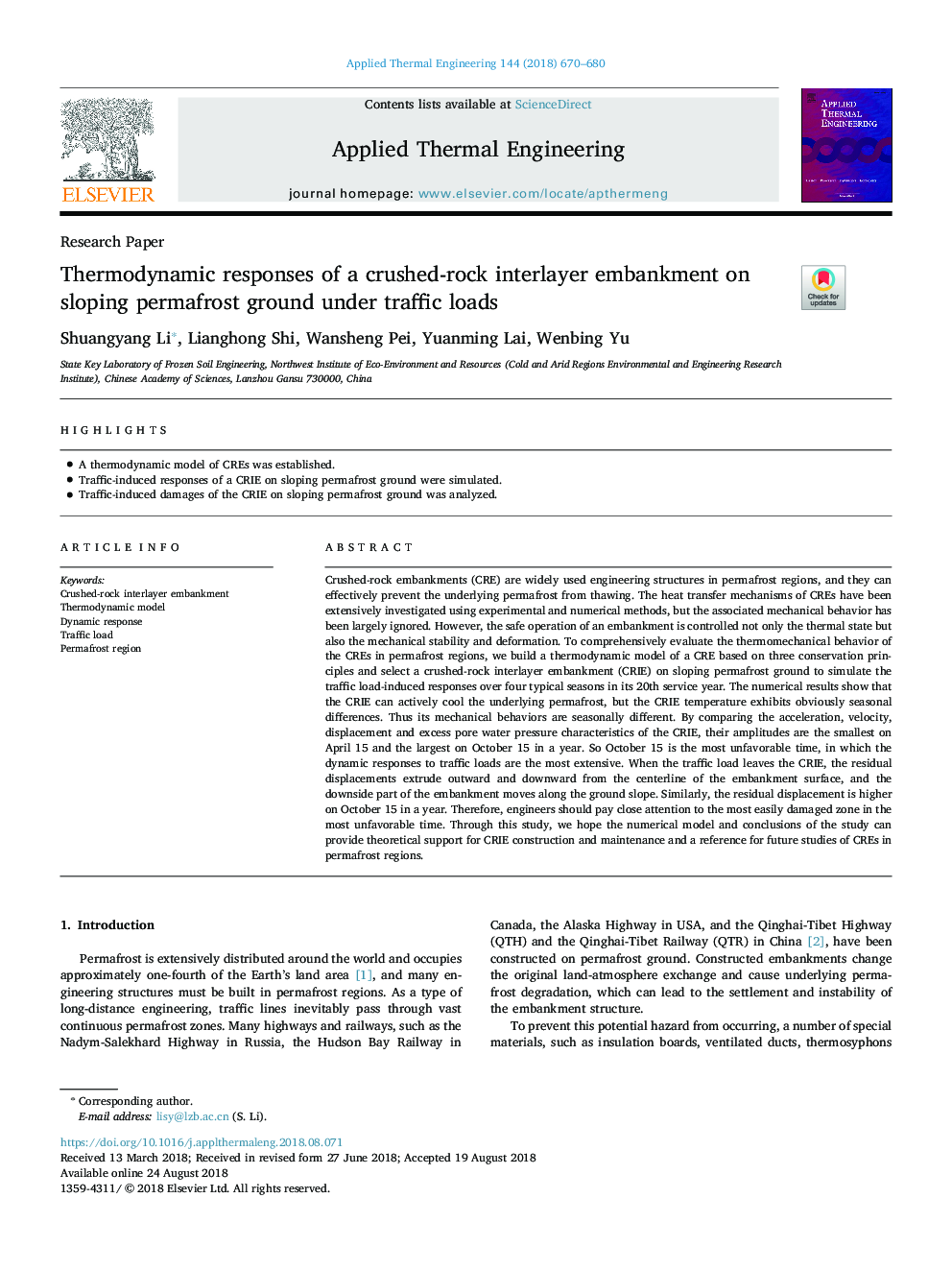| کد مقاله | کد نشریه | سال انتشار | مقاله انگلیسی | نسخه تمام متن |
|---|---|---|---|---|
| 10127320 | 1645050 | 2018 | 11 صفحه PDF | دانلود رایگان |
عنوان انگلیسی مقاله ISI
Thermodynamic responses of a crushed-rock interlayer embankment on sloping permafrost ground under traffic loads
ترجمه فارسی عنوان
پاسخهای ترمودینامیکی خاکریز بین دو لایه خرد شده سنگ بر روی سطح زمینی زمینی پرمافروش زیر بار ترافیک
دانلود مقاله + سفارش ترجمه
دانلود مقاله ISI انگلیسی
رایگان برای ایرانیان
کلمات کلیدی
خاکستری-سنگ، سنگفرش سطحی، مدل ترمودینامیکی پاسخ دینامیکی، بار ترافیک، منطقه پرمافراست،
موضوعات مرتبط
مهندسی و علوم پایه
مهندسی شیمی
جریان سیال و فرایندهای انتقال
چکیده انگلیسی
Crushed-rock embankments (CRE) are widely used engineering structures in permafrost regions, and they can effectively prevent the underlying permafrost from thawing. The heat transfer mechanisms of CREs have been extensively investigated using experimental and numerical methods, but the associated mechanical behavior has been largely ignored. However, the safe operation of an embankment is controlled not only the thermal state but also the mechanical stability and deformation. To comprehensively evaluate the thermomechanical behavior of the CREs in permafrost regions, we build a thermodynamic model of a CRE based on three conservation principles and select a crushed-rock interlayer embankment (CRIE) on sloping permafrost ground to simulate the traffic load-induced responses over four typical seasons in its 20th service year. The numerical results show that the CRIE can actively cool the underlying permafrost, but the CRIE temperature exhibits obviously seasonal differences. Thus its mechanical behaviors are seasonally different. By comparing the acceleration, velocity, displacement and excess pore water pressure characteristics of the CRIE, their amplitudes are the smallest on April 15 and the largest on October 15 in a year. So October 15 is the most unfavorable time, in which the dynamic responses to traffic loads are the most extensive. When the traffic load leaves the CRIE, the residual displacements extrude outward and downward from the centerline of the embankment surface, and the downside part of the embankment moves along the ground slope. Similarly, the residual displacement is higher on October 15 in a year. Therefore, engineers should pay close attention to the most easily damaged zone in the most unfavorable time. Through this study, we hope the numerical model and conclusions of the study can provide theoretical support for CRIE construction and maintenance and a reference for future studies of CREs in permafrost regions.
ناشر
Database: Elsevier - ScienceDirect (ساینس دایرکت)
Journal: Applied Thermal Engineering - Volume 144, 5 November 2018, Pages 670-680
Journal: Applied Thermal Engineering - Volume 144, 5 November 2018, Pages 670-680
نویسندگان
Shuangyang Li, Lianghong Shi, Wansheng Pei, Yuanming Lai, Wenbing Yu,
